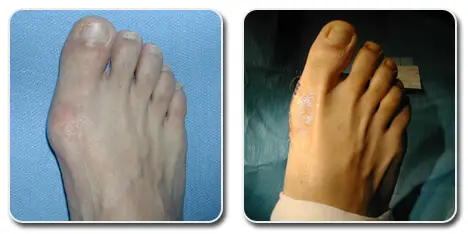Importance of Choosing the Right Footwear for Bunion Treatment
At some point in life, you may have experienced a painful and bony bump on the joint of your big toe. This bump, known as a bunion, can make it difficult for you to wear shoes, walk, or stand for extended periods. Bunions occur when the joint of the big toe becomes misaligned and pushes the toe towards the second toe. Over time, the big toe may begin to lean towards the other toes and cause more significant problems.
The good news is that you can manage bunions by selecting the right footwear. Shoes that fit poorly or are too tight can make the pain worse and increase the risk of complications. Choosing the right footwear can help reduce the pain and pressure on your toes, slow the progression of the bunion, and prevent the need for surgery. In this article, we will explore the importance of choosing the right footwear for bunion treatment.
Proper Fit
Wearing shoes that fit properly is crucial in managing bunions. Tight-fitting shoes can worsen the condition by putting pressure on the bunion, while loose shoes can cause your foot to slide around and cause friction. Proper-fitting shoes should have enough space for your toes to move freely and should not squeeze or pinch the bunion. Look for shoes with a wider toe box, which can help reduce the pressure on the bunion and give your toes enough room to move around.
Arch Support
Arch support is essential when selecting the right footwear for bunion treatment. Proper arch support can help redistribute your weight and reduce the pressure on your toes. Shoes with adequate arch support can also help improve your balance, reduce foot fatigue, and prevent other foot conditions. Look for shoes with built-in arch support or use inserts to provide additional support and cushioning.
Low Heels
High heels are a no-go when it comes to bunion treatment. High heels can cause your weight to shift forward and increase the pressure on your toes, leading to pain and discomfort. Opt for shoes with low heels or flats that distribute your weight evenly and reduce the pressure on your toes. Shoes with a small heel can help improve your posture and prevent other foot conditions such as plantar fasciitis.
Material Matters
Choosing the right material can also help manage bunions. Shoes made from rigid or stiff materials can irritate the bunion and cause pain, while shoes made from soft and flexible materials can provide comfort and support. Look for shoes made from natural materials such as leather or suede, which can mold to the shape of your foot and provide adequate support and cushioning.
Don't Forget Your Activity Level
Your activity level should also be considered when selecting the right footwear for bunion treatment. If you engage in activities such as running or walking, you may need shoes with more cushioning and support to absorb shock and reduce pressure on your toes. Look for shoes with shock-absorbing soles, which can help prevent other foot conditions such as heel spurs.
In conclusion, choosing the right footwear is crucial in managing bunions. Shoes that fit poorly or are too tight can make the pain worse and increase the risk of complications. When selecting the right footwear, consider the proper fit, arch support, low heels, material, and your activity level. With the right shoes, you can reduce pain, slow the progression of the bunion, and prevent the need for surgery.
See Also:
- Best shoes for swollen feet
- How to get rid of bunions on pinky toe
- Bunion surgery recovery week by week
- 4 weeks after bunion surgery
- Best bunion corrector
- What to expect 3 weeks after bunion surgery
- Pictures of bunions
- Shoes for cuboid syndrome
- Flip flops for bunions
- What to expect 2 weeks after bunion surgery
- best sneakers for ankle support
- Gout vs bunion


Nhận xét
Đăng nhận xét